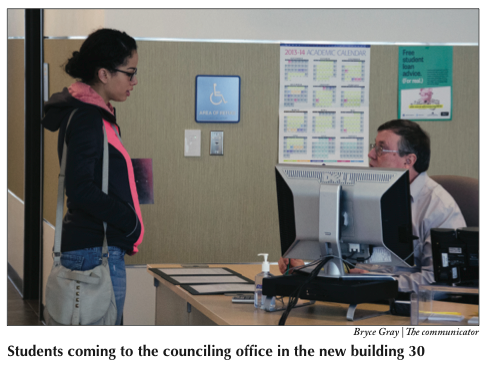Christian M. Koch
The Communicator
Here at SFCC the faculty are coming together in order to create a new type of culture for the benefit of enriched student-teacher relationships. In an attempt to im- prove students’ degree completion rates staff have developed and in- troduced new resources accessible to the students.
Up until recently “SFCC hasn’t done well at graduating students with completed degrees.” Janet Gullickson, President of Education, said. This was partly because SFCC was not focusing on degree com- pletion as a goal. Rather, according to Gullickson, the goal of the col- lege had been to have students at- tend The Falls and take classes that would in the future be transferable to the four year universities that the students are interested in.
“We[the faculty] are changing that goal now. We want students to transfer from SFCC having com- pleted degrees (such as an AA), so that they then receive that complete transfer of credits.” Gullickson said. “otherwise, other universities can choose which credits they do and don’t want to transfer.”
According to Sally E. Jackson, the Director of Planning of Institu- tional Effectiveness and Research here at SFCC, of students who reg- ister and begin during the Fall quar- ter, based on 2007-2009 numbers, 70 percent will return that follow- ing Winter quarter. However, only 45.4% of those fall-starting students will return the next Fall.
“Student service professionals and faculty members are leading the way towards improving our student retention and degree com- pletion.” Gullickson said. “We’ve implemented changes in order to promote degree completion like waiving the graduation fee, and having teachers advise their students” as to recommended academic routes and possibilities.
“I am very proud of what the faculty here is doing.” Gullickson said. “SFCC faculty will be having retention workshops, and students benefit from the [new] Early Alert system.”
This system informs teachers as to the progress students are mak- ing, or not making. This way, teach- ers may be able to prevent students
from reaching an academic point where the teachers can’t help them to recover. The theory being that this pro- gram will assist teachers in focusing their attention on students who need their help.
According to Jackson, of stu- dents starting during the Fall quarter (years 2007-2008) only 10.2 percent completed their degrees within the advertised timeline, this meaning that a student who was enrolled in a three year program completed the program at the end of the third year.
“The school’s goal for degree completion is at the 150 percent time completion rate” Jackson said. This means that the school aims to have students com- plete their degrees at a rate 150 percent the adver- tised timeline. A three year program then, by this standard, is expected to take a student four and a half years to complete. Of the students starting in the Fall quarter, during the years 2007-2009, 17.8 per- cent completed their degrees within the 150 percent time completion rate.
SFCC records student degree completion up to 200 percent time completed rate. The cumulative value of the three completion rates (100, 150, and 200) totals 49.3 percent. This means that of students who started in the Fall quarter of 2007-2009 only 49.3 percent of them completed their degrees within a time frame measured by the school. The remaining 50.7 percent of the students either failed to com- plete their degrees, transferred to another school with their loose credits, or completed their degree outside of the 200 percent time completion rate.
According to Gullickson, with these new mea- sures and implemented programs these numbers are expected to improve over the next couple years.
“we want students to complete their degree here at SFCC.” Gullickson said. “Not only is it cheaper than a four year university, but transferring with a degree is much cleaner.” According to Gullickson, students who complete their degree here at SFCC are likely to do as well, or better in their next univer- sity than those who did not transfer.
